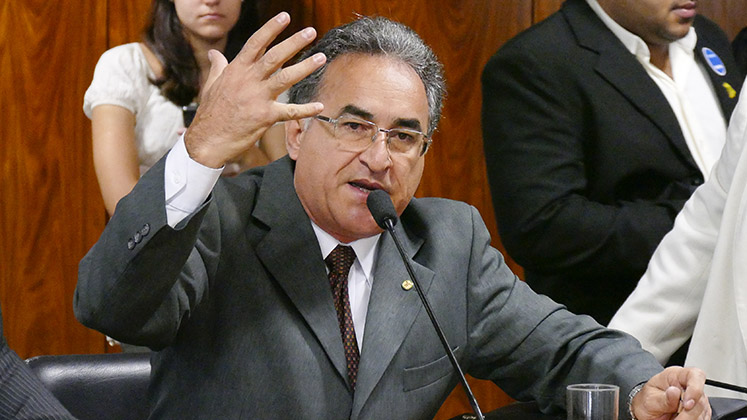In this article, Anand B and Shreya Gulati argue that India and other developing countries are currently faced with the twin challenges of economic revival and increasing inflation. Moreover, global economic recovery might prove to be detrimental for a developing country’s economy, contrary to the popular opinion. In the face of such challenges, they suggest that these countries need to walk a tightrope between accommodative and tight monetary policy.
The relentless fight against the spread of Covid-19 continues, ever since the first case was reported in Wuhan. However, lack of resources and inadequate healthcare facilities made this battle extremely challenging for the developing economies compared to their developed counterparts. Already struggling with subdued economic activity and massive revenue depletion, the policymakers in emerging economies are contemplating another economic danger in the form of inflation.
According to Bloomberg’s survey on economists, the estimated net change in inflation outlooks for 2022, compared to the 2021 survey, is considerably higher for many developing economies. Even though India’s retail inflation has slightly moderated in June 2021 to 6.26% from 6.30% in May 2021, it remains above the upper limit of the targeted inflation band of 2-6%. This puts the policymakers in a conundrum. On the one hand, economic recovery demands the aid of an accommodative monetary policy. On the other, looming inflationary pressure necessitates the adoption of a tight monetary policy.
Global recovery: boon or bane?
Apart from the domestic factors, emerging countries have been closely and cautiously observing the process of global recovery. Ironically, from a developing economy’s perspective, signs of global recovery should have been welcomed with great optimism and zeal. However, the upward pressure on the bond yields in industrialised economies – owing to economic recovery and concomitant inflation – will adversely affect the borrowing cost of emerging economies from the international debt markets.
The fiscal front
On the fiscal side, even though India primarily relies on its domestic market for debt pooling, the rising borrowing cost from abroad may result in excess demand for loanable funds in the domestic market. Such a scenario will have implications for debt sustainability in the long run. At this outset, economic revival via the fiscal route alone is rather doubtful. Therefore, the remaining option of liquidity injection to the economy is the monetary route. However, at a time when the ‘animal spirits’ have hit rock bottom, even substantial policy rate cuts may prove futile. Hence, prima facie, it is evident that monetary policy cannot single-handedly combat unprecedented exigencies like these.
What about monetary policy?
If there is a panacea to fix the deep dent in the global economy caused by the pandemic, it is nothing but the right mix of expansionary fiscal policy supported by accommodative monetary policy. However, this balance is difficult to strike and the rising inflationary pressure has already resulted in monetary tightening in Russia and Latin America. Most probably, India’s Central Bank will also follow the same path and hike the interest rates soon to keep the inflation under check. To what extent would such a policy shift affect the country’s economic growth? Well, the answer remains nebulous. However, past experiences show that monetary tightening will undoubtedly be detrimental to economic growth in times like these.
Another great depression in the offing?
Are we inching towards something as grave as the 1930s great depression? Not necessarily, because a considerable portion of the sudden spurt in inflation in most countries is primarily due to three reasons. One is the ‘low base effect’ from the previous year, which is likely to slow down once the base normalises. Second is the lockdown induced supply disruptions, which are expected to subside with the vaccines gaining ground and people reverting to normal life. If the packed stadiums witnessed during the Euro-2021 in some of the European venues and Norway’s declaration, ‘Covid-19 Is Over’ can be taken into consideration, an optimist will expect that ‘normal life’ is slowly but steadily being restored in various parts of the world (assuming that the delta variant across the globe and the third wave in India will not be lethal). Last but not least, there exists a substantial pent-up demand across the world. Pre-pandemic rates of household spending, which saw a sharp reduction during the spate of lockdowns and similar restrictions, are slowly being reinstated. This means the involuntary unemployment is likely to be moderated.
Policy options for India
In the Indian case, it may take a little more time to declare ‘normalcy’ considering the socioeconomic and geopolitical diversity of the country. The scenario is improving as the majority of the states have initiated the lifting of lockdown restrictions post the second wave. At this outset, India’s immediate concern is boosting the GDP growth while maintaining price stability. Once the supply constraints are removed, consumer prices will be stabilised to a greater extent.
However, that is only half the story; unless the retail fuel prices are reduced, inflation and, more importantly, inflation expectations cannot be curbed effectively. Thus, the high taxes on petroleum products should be cut immediately. Many economists have suggested that bringing petroleum products within the purview of the GST (Goods and Services Tax) net would be a feasible policy option in this regard. Further, the economy may still witness – in fact, it has witnessed – a surge in core inflation (a measure which excludes transitory components such as food and fuel products) owing to the influence of pent-up demand leading to a mismatch between actual output and the potential output of the economy.
Nonetheless, this will mostly be a short-run phenomenon that might be corrected in the medium to long run when the economy’s potential output picks up. In summary, inflation has resurfaced both at the domestic and international level, leaving less legroom for the monetary authority to operate. The Reserve Bank of India faces a tightrope walk between accommodative and tight monetary policy, making monetary policy an extremely tricky business. As far as India is concerned, oscillating and alternating between accommodative and tight monetary policy in varying degrees can help revive the economy while taming inflation.
The views expressed in this post are those of the author and in no way reflect those of the International Development LSE blog or the London School of Economics and Political Science.





